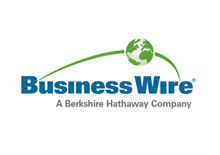Middle East and Africa Process Oil Market Drivers, Restraints, Opportunities & Challenges During the Forecast Period, 2019-2027 - ResearchAndMarkets.com
The "Middle East and Africa Process Oil Market 2019-2027" report has been added to ResearchAndMarkets.com's offering.
Market Outlook
This research has estimated the growth of the process oil market in the Middle East and Africa at a CAGR of 4.40% in terms of revenue and a CAGR of 4.32% in terms of demand for the forecasted period 2019-2027.
Saudi Arabia, Turkey, the United Arab Emirates, South Africa, and Rest of Middle East and Africa constitute the market for process oil in the Middle East and Africa region.
The rising preference by consumers for the original equipment manufacturer (OEM) channels are expected to drive the market sales in the region. Additionally, the stringent government regulations considering the usage of pre-used tires in vehicles and the import standards are also contributing to the growth of synthetic rubber production for the tire manufacturing process. This is predicted to create lucrative opportunities for the growth of the process oil market.
There is a significant growth in the UAE's petroleum exports as per the UAE Central Bank's statistics. The country also has a well-built infrastructure and an interior pipeline network that connects oil fields with processing plants and export terminals. For instance, the Abu Dhabi Crude Oil Pipeline offers the country a direct link from the large fields of its western desert to the Gulf of Oman as a channel to the markets across the world. This has been fueling the process oil market in the United Arab Emirates.
Key Topics Covered:
1. Middle East and Africa Process Oil Market - Summary
2. Industry Outlook
2.1. Market Definition
2.2. Porter's Five Forces Model
2.2.1. Bargaining Power of Buyers
2.2.2. Bargaining Power of Suppliers
2.2.3. Threat of New Entrants
2.2.4. Threat of Substitutes
2.2.5. Threat of Rivalry
2.3. Market Trends
2.4. Market Share Outlook
2.5. Market Attractiveness Index
2.6. Key Insight
2.7. Market Drivers
2.7.1. Increasing Demand for Process Oil in the Textile Industry
2.7.2. Growing Personal Care Industry
2.7.3. Rising Vehicular Production and Growing Automotive Sector
2.8. Market Restraints
2.8.1. Restrictions in the Usage of Polycyclic Aromatic Hydrocarbon (Pah)
2.8.2. Emergence of Dry-Type Transformers
2.9. Market Opportunities
2.9.1. Opportunities Presented By Adhering to the Usage of Low Polyaromatic Hydrocarbon (Pah) Oils
2.10. Market Challenges
2.10.1. Fluctuating Raw Material Prices
2.10.2. Changing Crude Oil Prices
3. Process Oil Market Outlook - By Type
3.1. Naphthenic Oil
3.2. Paraffin
3.3. Aromatic
3.4. Non-Carcinogenic
4. Process Oil Market Outlook - By Application
4.1. Tire & Rubber
4.2. Polymer
4.3. Personal Care
4.4. Textile
4.5. Other Applications
5. Process Oil Market - Regional Outlook
5.1. Middle East and Africa
5.1.1. Country Analysis
5.1.1.1. Saudi Arabia
5.1.1.2. Turkey
5.1.1.3. United Arab Emirates
5.1.1.4. South Africa
5.1.1.5. Rest of Middle East & Africa
6. Company Profiles
6.1. Chevron Corporation
6.2. Gazprom
6.3. Gp Petroleums
6.4. Apar Industries Ltd.
6.5. Lanxess Process Oil
6.6. Royal Dutch Shell Plc
6.7. Hindustan Petroleum Corporation Ltd.
6.8. Hollyfrontier Refining & Marketing Inc.
6.9. Calumet Specialty Products Partners, L.P.
6.10. Ergon North & South America
6.11. Total S.A.
6.12. Petrochina Company Ltd.
6.13. Idemitsu Kosan Co., Ltd.
6.14. Exxon Mobil Chemical Company
6.15. Petrobras
6.16. Repsol S.A.
6.17. Sasol
6.18. Iranol Company
6.19. Jx Nippon Oil & Gas Exploration
6.20. Nynas Ab
6.21. Sunoco Lp
6.22. Lukoil
6.23. Orgkhim Biochemical Holding
6.24. Panama Petrochem Ltd.
6.25. Petronas Lubricants International
6.26. Rosneft
7. Research Methodology & Scope
7.1. Research Scope & Deliverables
7.1.1. Objectives of Study
7.1.2. Scope of Study
7.2. Sources of Data
7.2.1. Primary Data Sources
7.2.2. Secondary Data Sources
7.3. Research Methodology
7.3.1. Evaluation of Proposed Market
7.3.2. Identification of Data Sources
7.3.3. Assessment of Market Determinants
7.3.4. Data Collection
7.3.5. Data Validation & Analysis
For more information about this report visit https://www.researchandmarkets.com/r/t8no35
View source version on businesswire.com: https://www.businesswire.com/news/home/20200113005545/en/





